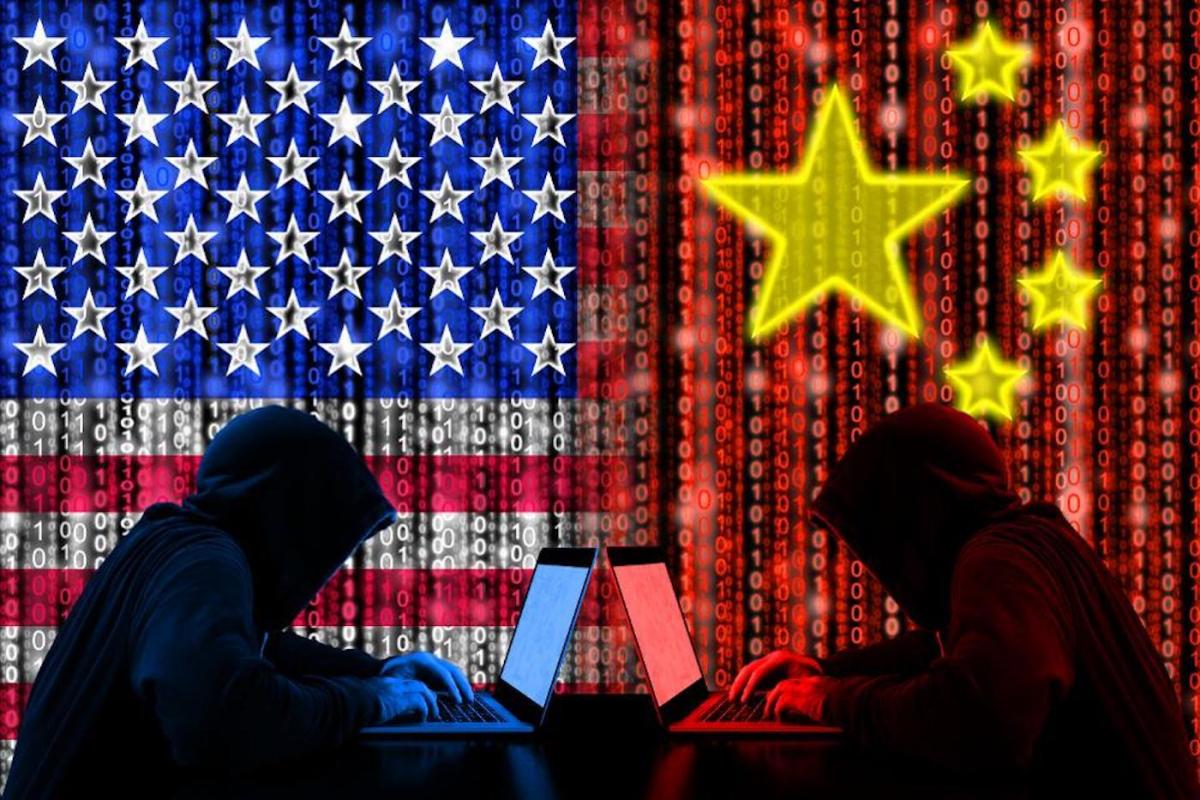[ad_1]
Washington and Beijing appear to have stepped back from the brink of tech war, and a breakthrough in US-China relations now seems possible after four years of trade and military tensions between the world’s two largest economies.
Chinese official sources told journalists Tuesday that Foreign Minister Wang Yi and Xi Jinping’s foreign policy advisor Yang Jiechi might meet with their American counterparts in Anchorage, Alaska, to reopen high-level communications with the United States.
The proposed Anchorage meeting was first reported by the South China Morning Post. There was no formal confirmation, but neither was the report denied. Global Times editor Hu Xijin tweeted that he hoped the news was true.
The report of a prospective reset of Sino-American relations follows a week of worry over a possible tech war between the United States and China, after Microsoft accused Chinese hackers with ties to the government of infiltrating tens of thousands of US email servers.
The hacker group dubbed “Hafnium†by Microsoft is “assessed to be state-sponsored and operating out of China, based on observed victimology, tactics and procedures,†the software giant wrote in a blog post. The US National Security Council formed a task force under Deputy National Security Advisor Anne Neuberger to counter the threat.
Faced with the prospect of a “hot†tech war with China, the Biden Administration wants to reduce tensions, according to US tech industry executives. American firms active in China had long feared that Beijing would retaliate against American efforts to stifle its high-tech industries, including the Trump Administration’s ban on high-end computer chips and semiconductor manufacturing equipment.
At last week’s National People’s Congress, China’s leaders affirmed an all-out effort for self-sufficiency in semiconductors. Some analysts estimate the cost of compensating for US sanctions at 1 to 2 percentage points of GDP.
In the estimate of some analysts, China’s unexpectedly low 6% GDP growth target for 2021 – compared with a consensus forecast of 8% to 9% growth – reflects the high costs of achieving self-sufficiency. China imported US $350 billion of computer chips in 2020, the vast majority of its consumption.
The Trump Administration’s ban on chip sales to China’s telecom equipment producers including Huawei and ZTE threatens to slow down China’s $200 billion rollout of 5G mobile broadband, the centerpiece of the country’s high-tech industrial strategy.
Washington’s “entity list†sanctions against sales of semiconductors to China assert an unprecedented degree of extraterritorial authority. They prevent Taiwanese chipmakers from fabricating Chinese designs on the grounds that the Taiwanese use American equipment and intellectual property. China considers the sanctions illegal, and especially provocative given Taiwan’s juridical status as a province of China.
China could hurt the United States in a number of ways. In late February, China’s Ministry of Industry and Information Technology asked industry executives to evaluate the impact of a ban on exports of rare earth minerals to the United States, the Financial Times reported. China controls 80% of the world supply of the minerals, which are irreplaceable for key US defense systems, including the F-35 fighter.
In addition, China could restrict the operations of US firms in China – Apple, for example, which earned 15% of its revenue in China last year.
US industry analysts believe that China instigated the “Hafnium†hack to demonstrate its ability to damage the American economy with plausible deniability, rather than taking overt retaliatory measures that predictably would provoke a general escalation.
A former senior US intelligence official told Asia Times that press leaks from the Biden Administration show that Washington wants to avoid a confrontation with China as well as Russia. The US intelligence community last year blamed Russian intelligence for the hack of the cybersecurity firm Solarwinds in which malware was implanted in the systems of 18,000 Solarwinds customers.
The official cited leaks to the news media about forthcoming retaliatory measures as an indication that Washington wanted to defuse a prospective confrontation. Veteran New York Times national security reporter David E. Sanger wrote March 8:
Just as it plans to begin retaliating against Russia for the large-scale hacking of American government agencies and corporations discovered late last year, the Biden administration faces a new cyberattack that raises the question of whether it will have to strike back at another major adversary: China…. The United States government has not made public any formal determination of who was responsible for the hacking, but at the White House and on Microsoft’s campus in Redmond, Wash., the fear is that espionage and theft may be a prelude to far more destructive activity, such as changing data or wiping it out…
The first major move is expected over the next three weeks, officials said, with a series of clandestine actions across Russian networks that are intended to be evident to President Vladimir V. Putin and his intelligence services and military but not to the wider world. The officials said the actions would be combined with some kind of economic sanctions — though there are few truly effective sanctions left to impose — and an executive order from Mr. Biden to accelerate the hardening of federal government networks after the Russian hacking, which went undetected for months until it was discovered by a private cybersecurity firm.
The former US official commented, “If you want to retaliate covertly, you don’t announce a covert operation in advance – you just go ahead and do it. The US Intelligence Community leaks plans like this in order not to carry them out.â€
Sanger reported that there was a debate inside the Biden Administration about how to respond, adding: “Government officials often fear that too strong a response risks escalation. That is a particular concern in the Russian and Chinese attacks, where both countries have clearly planted ‘back doors’ to American systems that could be used for more destructive purposes.â€
US industry officials are urging the Biden Administration to avoid escalation with China and Russia, which might lead to a cyberwar with an unacceptable level of damage.
American technology analysts take note of Beijing’s resolve to prevail in technology competition with the United States, especially in semiconductors, where China is starting from a far less advanced position. According to a prominent industry analyst, it will take China more than ten years to catch up with Western sophistication in chip fabrication, but with enough effort China cannot be stopped from achieving self-sufficiency in chips.
An analysis by the Xinghai Intelligence Bureau published March 8 by guancha.cn, a website close to China’s State Council, declared: “For China’s semiconductor industry, 2021 may be a turnaround year.â€
While Taiwan and South Korea can produce chips with transistor gate width of just 5 nanometers, with far more transistors per chip and more efficient power consumption, “China’s semiconductors are 1-2 generations behind foreign countries as a whole, and some products are more than 3 generations behind. The benchmark international level has reached 7nm, and our overall level is still at 28nm. A small part of China’s semiconductor equipment industry has reached the international advanced level (micro semiconductor etching machine),†while domestic lithography machines and a few other products are three generations behind.
But the Xinghai Intelligence brief concludes that what matters most is that China produces nearly the whole range of semiconductor manufacturing equipment:
It doesn’t matter if we are behind. It is death to have an incomplete range of products. Although our current level is not as good as that of established semiconductor powerhouses such as the United States and Japan, the degree of completeness of our industry is not weak compared with them… The industrial chain of China’s semiconductor equipment is very complete, including, diffusion, lithography, etching, and thin film growth… We can produce all kinds of core equipment in the semiconductor industry.
The report concludes: “As long as we can continue to persevere, sooner or later we will be able to catch up.â€
[ad_2]
Source link













